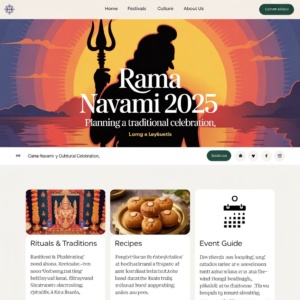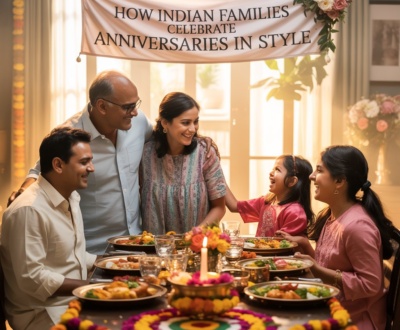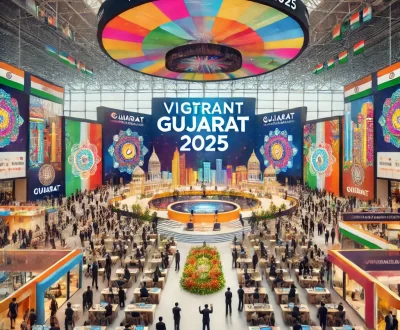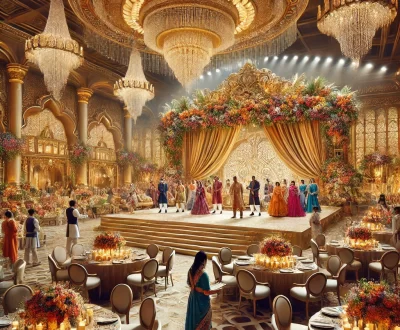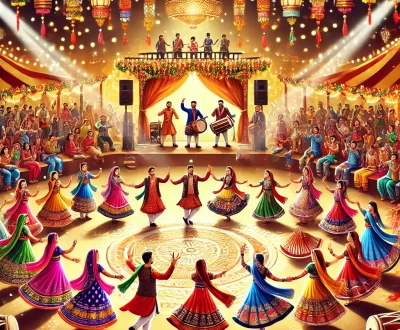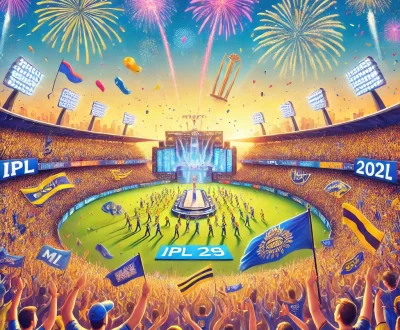Rama Navami 2025: Planning a Traditional Celebration
Rama Navami, one of the most sacred festivals in India, marks the birth of Lord Rama—the seventh avatar of Lord Vishnu. Celebrated with immense devotion across the country, this day is a symbol of dharma, courage, and righteousness. In 2025, as the world moves forward with new technologies and modern trends, how can we still preserve the spirit of this ancient festival while giving it a fresh, event-friendly twist?
As a fresher in event management, I found myself asking this very question. So here’s a deep dive into how to plan a Rama Navami celebration that balances rich traditions with creative modern elements—ideal for communities, residential societies, cultural organizations, and even schools.
Understanding the Cultural Essence of Rama Navami
Before planning any culturally rooted event, it’s essential to understand its significance. Rama Navami falls on the ninth day (Navami) of the Chaitra month in the Hindu lunar calendar. It celebrates the birth of Lord Rama in Ayodhya and is widely observed with rituals, bhajans, and religious processions.
Key traditional components of the celebration include:
Fasting and prayers
Reading of Ramayana
Bhajan-kirtan and satsang
Temple visits or home pooja
Distribution of prasad (panakam, kosambari, fruits)
As an event planner, the goal is to honor these customs while adding elements that engage today’s audience—especially the youth and younger families.
Step 1: Planning the Concept – Tradition Meets Innovation
The first step is defining the theme and scope of the event. For Rama Navami 2025, we can look at a hybrid theme like:
“Rama Rajya: Ancient Wisdom in a Modern World”
This theme allows you to explore:
Rama’s values through storytelling and drama
Interactive setups with digital tools
Family-friendly workshops that teach traditional values
Eco-conscious decorations and setups
Step 2: Choosing the Right Venue
Depending on your audience size and budget, the event can be hosted at:
A temple premises or community hall
An open-air park or society lawn
A school auditorium or town hall
Modern Tip:
If your audience is tech-savvy or spread across multiple cities, consider a hybrid setup with a livestream option on YouTube, Zoom, or Instagram Live for family and friends who can’t attend physically.
Step 3: Décor – Blend of Devotion and Aesthetics
Decorating for a traditional event doesn’t mean being stuck in the past. Create a mix of:
Traditional Elements:
Banana leaves and mango leaf torans
Rangoli designs with rice flour and flowers
Brass lamps (deepam), diyas, and bells
Fabric canopies in saffron, maroon, and yellow
Modern Touch:
LED-lit diyas and fairy lights
Projector screens with Rama’s life visuals or Ramayana clips
Digital rangoli projections (for stage decor)
AR selfie booths with mythological backdrops for kids and families
Step 4: Event Segments – Keeping the Day Engaging
Here’s a sample event flow that blends traditional pooja with interactive experiences:
🌅 Morning: Pooja & Ramayana Recitation
Start with a Ganesh Vandana followed by a Rama Navami havan
Invite a local priest or spiritual speaker
Play pre-recorded Ramayana verses with background visuals
🧒 Midday: Kids’ Corner & Cultural Programs
Fancy dress competition – Dress as characters from Ramayana
Ramayana storytelling using puppets or animation
Art & craft workshop (make your own bow and arrow or create paper Diya’s)
🕺 Evening: Bhajan, Drama & Community Feast
Live bhajan performance or devotional band
A modern Ramayana skit with youth narrators and dance-dramas
Serve traditional prasad with modern packaging (eco-friendly)
Step 5: Technology & Engagement
Here’s how to include tech into a cultural event:
QR codes for Ramayana e-books
Place QR codes around the venue so visitors can download Ramayana excerpts or stories.
Interactive screen quizzes
Host a live “Ramayana Quiz” on screen using platforms like Kahoot, with small prizes.
Social Media Hashtag Campaign
Promote your event with hashtags like #RamaNavami2025 or #ModernRamayana and ask attendees to tag your event page.
Online RSVP & Invites
Use platforms like Canva or WhatsApp Business to send digital invites and get confirmations.
Food & Prasad – Traditional Taste, Clean Presentation
One of the best parts of Indian festivals is food! Keep it simple yet festive.
Menu Ideas:
Panakam (jaggery drink with cardamom)
Kosambari (moong salad)
Lemon rice, tamarind rice
Payasam or kheer
Banana leaf prasad packets
Modern Touch:
Eco-friendly food stalls or counters
Menu tags with health benefits of traditional dishes
Use biodegradable cutlery and plates
Sustainability: The Modern Must-Have
No event in 2025 is complete without eco-conscious practices. Here’s how to stay green:
Use reusable cloth décor
Avoid plastic flowers or single-use items
Distribute seed paper souvenirs with Lord Rama quotes
Use LED lighting and natural ventilation
Volunteer & Community Involvement
Get the local youth and residents involved:
Assign volunteers for each zone (pooja, stage, food, kids)
Give student interns roles in backstage coordination
Include senior citizens for storytelling or anchoring the Ramayana section
Community-driven events create a stronger emotional bond and reduce the burden on the organizing team.
Budgeting & Sponsorship
As a fresher, managing a budget can be tricky. Here are some practical tips:
Break down costs: Venue, décor, food, sound/lights, marketing, and team.
Get small local sponsors (sweet shops, bookstores, decorators).
Offer them stalls or banners in return.
Use DIY options for décor and stage setup wherever possible.
My Experience as a Fresher Planning This Event
As someone new to event management, planning a culturally rich event like Rama Navami was both a challenge and a joy. I learned:
How to respect traditions while keeping the audience engaged
The importance of teamwork and community collaboration
How even small details (like the design of a prasad packet) matter
Most importantly, I realized that culture never goes out of style—it just needs a creative stage.
Final Thoughts
Rama Navami is a beautiful opportunity to connect hearts, teach values, and celebrate dharma. In 2025, as India bridges heritage and innovation, event managers have the exciting task of keeping tradition alive—while making it accessible to every generation.
Subscribe to our newsletter!
More from our blog
See all postsRecent Posts
- How Indian Families Celebrate Anniversaries in Style May 28, 2025
- Rama Navami 2025: Planning a Traditional Celebration April 7, 2025
- Event Management of Maha Kumbh Mela 2025: A Grand Organizational Marvel March 26, 2025

